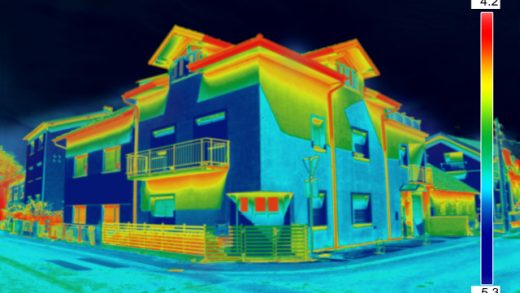There are several types of thermal imaging devices: Thermal imaging binoculars, Thermal imaging monoculars, Thermal imaging sights, Thermal goggles, Thermal clamping systems. They differ in their use, size, and weight, but they work according to the same principle. It is based on IR red vision technology. It involves determining the temperature of the surfaces to which the screen of the Thermal Device is directed. Due to the temperature difference, an image appears on the monitor of the Thermal Cameras. A characteristic feature of thermal imagers is their work in extreme conditions, equally good, both during the day and at night. They do not require additional illumination to work at night. Fog, smoke, dust storm, snow, dense vegetation, glare from the bright sun will not interfere with the work of thermal imagers. All devices have the ability to record video according to the selected scenario and take pictures. They can work for a long time in continuous video mode without recharging. They are compatible with iOS and Android smart devices. They have a USB port for charging and data transfer. Some models are equipped with WI-FI for information transfer. All types of thermal imagers are made of high-strength materials, protected from moisture and dust.
Thermal imaging binoculars and monoculars
Let us consider the features of Thermal binoculars. They provide an excellent overview of the area and a three-dimensional image. Designed for continuous monitoring. Installation on a tripod is possible if necessary. There are models with one lens and two eyepieces and models with two lenses and two eyepieces. Each has its own advantages. Thermal binoculars can record videos and take photos. The interface is intuitive and simple. There is the possibility of digital zoom, the choice of colors. Thermal binoculars are compatible with smart devices and have a USB port. Thermal binoculars will be good for large, open spaces without causing significant eyestrain.
Thermal imaging monoculars have a slightly different structure than binoculars. They have one lens and one eyepiece. Thermal imaging monoculars are compact, portable, and lightweight. Monoculars fit easily into a jacket pocket or bag. They are somewhat cheaper than thermal imaging binoculars. Among the shortcomings, we note the low screen resolution. Due to this, with a large approximation, the image loses the definition of the outline. Thermal imaging monoculars can be attached to weapons and serve as a sight.
Thermal glasses
Thermal goggles have several advantages over other types of thermal imagers. They have a larger viewing angle, a fully three-dimensional image. They can be used on their own or attached to the head, helmet using mounts. At the same time, hands remain free, and it is possible to move comfortably. Designed for long-term, continuous monitoring in small spaces. Thermal glasses have all the advantages of modern digital gadgets, such as recording videos, taking photos, and transferring data. In addition, they are compatible with smartphones and computers. Among the advantages of the Thermal Glasses, we note the comfort of wearing and a wide scope of use.
Thermal imaging sights.
Thermal sights combines all the best qualities of Thermal devices in a very compact device. However, they have their own characteristics. Thermal imaging sights are attached to the weapon using quick release bars. They work on the wireless remote control. They are equipped with an adjustable electronic reticle, a digitally controlled sight, and a rangefinder for accurate target hitting. Thermal imaging sights are equipped with a function to prevent the recoil of the weapon when fired. Thermal imaging sights can take photos while pulling the trigger, record video, transfer materials over the WI-FI network to a phone or tablet. Some models have the ability to transfer video directly to the Internet. Compared to other Thermal devices, they have a limited viewing angle. They are designed for hunting, special services, or strike ball fans.
Thermal clamping systems
The telescopic thermal clamping systems are designed to fit onto an existing telescopic sight. They quickly turn weapons for day hunting into a Thermal Imager. Thermal clamping systems have quick-detachable fasteners, external power supply via micro USB, remote control, electronic precision correction, power supply from standard batteries. They do not require pre-zeroing. Thermal clamping systems allow you to work effectively in the dark without wasting time changing day optics.
All types of Thermal imagers are high technology products. They greatly expand our capabilities. The choice of a particular product is difficult given the variety available. It all depends on what you intend to do. Thermal imaging binoculars are rarely found in the hands of hunters; they are more convenient for perimeter security and research purposes. Thermal goggles are used mainly by special services. Hunting Nicks prefer a regular monocular for search purposes or a Thermal imaging sight for shooting. Thermal clamping systems on the telescopic sight are suitable for high-precision shooting since the reticle of day optics is used during operation. We hope we have helped facilitate the task of choosing the type of Thermal Imagers.


